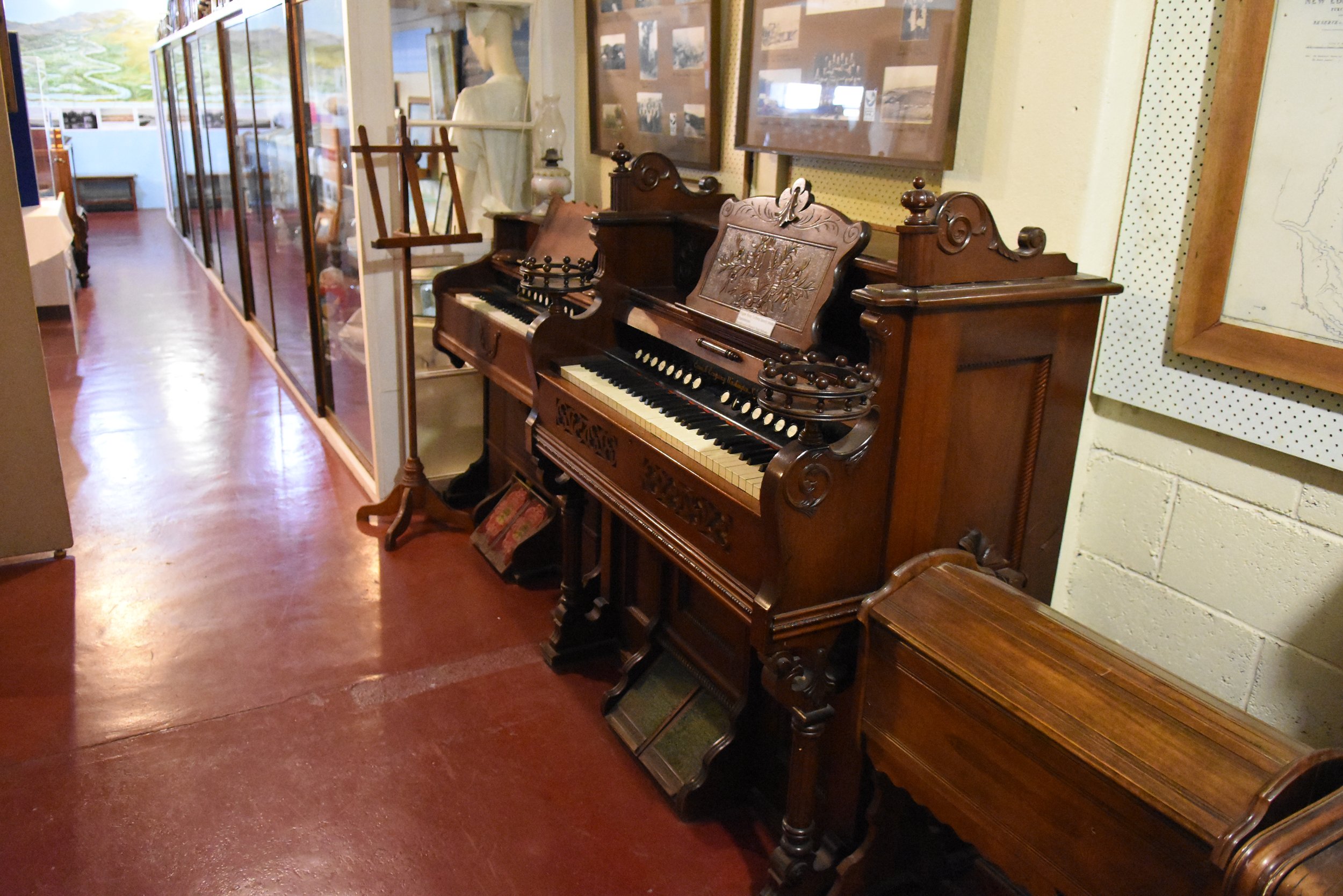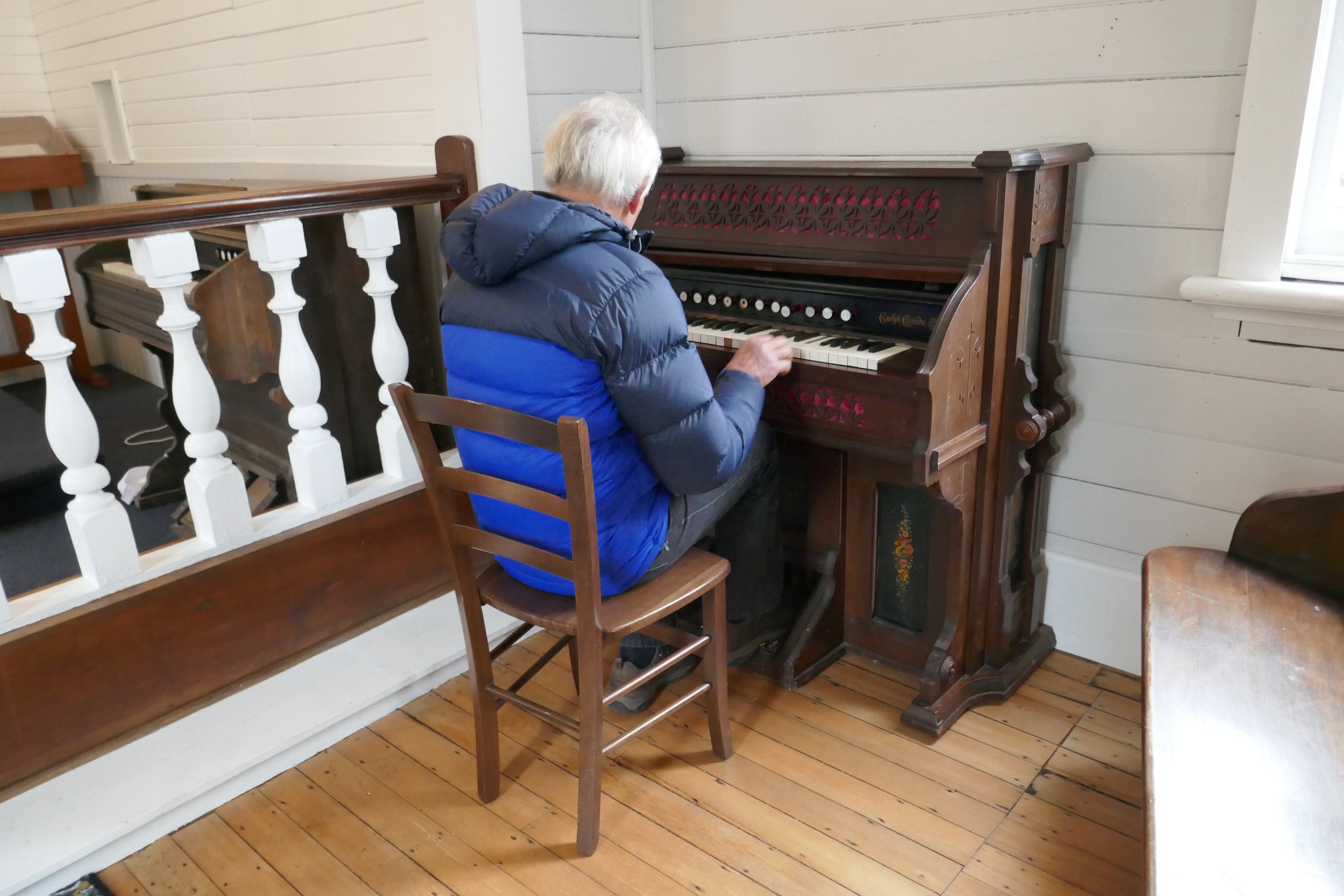From Alamy.com
When this photo is expanded the piano’s name is Chickering. There is a comprehensive Wikipedia article available online. The company was based in Boston, USA and began in 1823. The company ceased production of these pianos prior in 1983.
The following photos are from Shantytown, some are of pianos and the others are of the organs in the church. The pianos are - Collard and Collard and Joh. Hirschfield. The Joh. probably stands for Johann.
These photos also come from Shantytown; two organs are - George Wood and Co. and Guelph.
Now, some photos from Otira Hotel. One a Guelph organ, a Doherty player piano, a William Spaethe piano and an all-in-one piano.
Owned by website owner.
These photos were taken at the Milton Museum. According to the book written by Alfred Dolge ‘Pianos and their Makers’, Jacob Kirchmann, (later Kirkman) a German harpsichord maker, arrived in London in 1740. He left an estate, after his death in 1778 worth $1,000,000. His early financial success, along with other piano and harpsichord makers, enabled London to become the birthplace of the mechanised piano factory. According to Dolge, by 1851 there were 180 piano making firms in London, producing 25,000 pianos annually.





A Spohr piano from Stuggart, Germany in the Milton Musuem.




The Cornish Piano & Organ company was established in Washington, New Jersey in 1879. The Cornish Piano & Organ Company was a huge mail order house, selling their organs and pianos directly to the consumer from the factory through elaborate sales catalogues, advertisements, and word of mouth. This allowed Cornish to sell their instruments at a lower price than most, and their aggressive financing plans helped them become a major player in the American piano industry. Both Cornish pianos and organs were usually very elaborately carved, and they were generally very good quality overall.
This is from - antiquepianoshop.com/online-museum/cornish/
These photos were taken in the Milton Museum.



The following photos of this Guelph organ were taken at the Milton Museum.



The following photos were taken in the Balclutha Museum.





Exley organ at the Balclutha Museum.


These photos show a Strohmenger piano, which according to Alfred Dolge commenced in 1834 as Strohmenger and Sons.
Joachim Strohmenger married Sophia Ann Elizabeth Martinens on the 14th September 1834 at St Pancras, London by banns. Matilda and Augustus Martinens were witnesses.
In the 1851 Census, Joachim Strohmenger, aged 47 years old (contradiction with his age) from Frankfurt, Germany is working as a pianoforte manufacturer. He has an English apprentice (I assume working in his business) living with his family and also living with them are two German pianoforte tuners.
In the 1861 Census Joachim Strohmenger, aged 52 years old, born in Germany is working as a pianoforte manufacturer employing 6 men and 4 boys. Three of his sons are working in the business and his oldest daughter Sophie is working as a piano teacher.
When Joachim and Sophia’s son Henry Charles married in 1868, both Henry and his father are pianoforte manufacturers.
In the 1871 Census Joachim Strohmenger, aged 67 years old (contradicts the age in 1861), born in Bavaria, Germany, is working as pianoforte manufacturer employing 10 boys and three boys.
Joachim Strohmenger’s estate was valued at under 3000UK pounds after he died on 31st March 1880.




This Steinway grand is in Knox College, Dunedin.
The following photos are of an organ in the chapel at Knox College.




These photos were taken at Selwyn College, Dunedin. There is an extensive article online concerning the manufacture of Hopkinson pianos.



This instrument is located in the Hewitson Library at Knox College, Dunedin.



From personal ephemera collection.










All photos from personal collection.
























